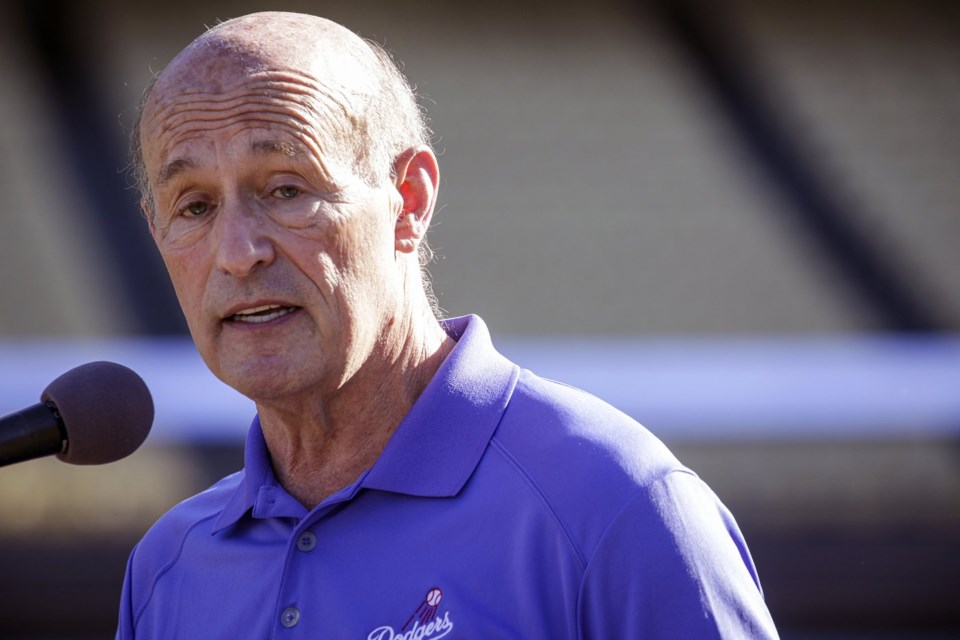As impressive as the PWHL’s growth has been less than two years since its launch, with the league blowing past initial attendance and revenue projections, and already into its first phase of expansion, Stan Kasten says you’ve seen nothing yet.
The league’s advisory board member laid out an ambitious vision of the PWHL’s future during a phone interview with The Associated Press on Thursday.
Kasten foresees further expansion — beyond the recent additions of Vancouver and Seattle to grow the PWHL to eight teams — within the next few years; the league capitalizing on the 2026 Milan Winter Games to broaden its reach internationally; and the prospect of turning a profit by 2031, when the league’s current CBA with its players expires.
“By every measure, we’re ahead of where we thought we would be. And we never thought we were going to be this niche six-team league in the northeast of North America,” Kasten said.
“Our manifest destiny is a lot more than six. It’s a lot more than eight. I don’t know how many," he added. "My point is, we’re going to be a league like every other real major league, and that’s our goal. ... We’re going to be spread — our footprint will be across this continent and hopefully others as well.”
Expansion plans
Without making a firm commitment, Kasten said there was enough interest from major markets that missed out on expansion this year to add even more teams by 2026-27. He said the league will have a better timeline on the next expansion phase based on how smoothly Vancouver and Seattle are incorporated.
“I’ll know by midseason what I think we should do and we’ll go from there,” he said. “I don’t know if it’s the year after or the year after that, but I think it’ll be sooner than most people ever imagined.”
Eye on Europe
What’s clearer is the league turning its focus toward Europe to coincide with the Olympics, and a women’s hockey tournament predominantly featuring PWHL talent.
Kasten said there have been discussions about playing exhibition games in Europe within the next two years, as well as building ties with European leagues for developmental purposes and even of one day establishing teams there.
“Europe is a big part of our future,” Kasten said.
“I think our presence on the international stage next year is going to be really well-timed, a propitious step for us,” he added. “We think the period before the Olympics, during the Olympics and after the Olympics are very important to the next stage of our development.”
Kasten spoke from Ottawa where he attended Game 2 of the best-of-five Walter Cup Finals series, which is tied at 1 after defending champion Minnesota's 2-1 overtime win.
Attendance jumps
The PWHL is closing its second season, which featured jumps in attendance, revenues, sponsorships and goal scoring — from 4.8 to 5.02 per outing — over the inaugural season.
Average attendance rose from 5,448 per contest last year to 7,260 due in part to nine neutral site games drawing a combined 123,601 fans.
Attendance in Toronto and Montreal jumped with both teams playing in larger venues, though Minnesota and Ottawa had slight drops in average turnout when not including their designated “home” neutral site games.
Turnout continues to lag in New York where the Sirens finished last in the standings for a second straight year while averaging a league-low 2,764 fans per game — up from 2,496 last year — at the NHL Devils home, the Prudential Center.
Without providing exact figures, executive vice president of business operations Amy Scheer said the league’s sponsorships grew by 50% and merchandise sales doubled — helped by the PWHL unveiling logos and nicknames for its six teams this season.
Kasten doesn’t discount needs the PWHL has to address, noting the league intends to increase promotions and improve venues in various markets. Another concern is how fanbases will respond to each of the six existing teams standing to lose four players each as part of the expansion process next month.
Hopeful future
For Kasten, that doesn’t take away what the league has accomplished in 23 months since being launched by his boss, Los Angeles Dodgers owner Mark Walter and wife Kimbra, and tennis icon Billie Jean King. As the PWHL’s financial backer, Walter committed hundreds of millions of dollars as part of a long-term vision to bring together the world’s top women players in one league.
Kasten said the initial projection for attendance was 1,000 per game for a league that in March surpassed the 1 million mark, including playoffs.
“I see us on a very distinct upward track able to look towards seasons where we can start to turn the corner and be in the black,” Kasten said, looking ahead to 2031.
“We’re far away from that now and that’s OK. We projected that,” he added. “But when that happens, we can also think about expanding the schedule. And with an expanded schedule in an environment where you’re finally making money, well, now there’s more money for more people.
“And so I hope by then we’re at that point. That would thrill me.”
___
AP Women’s Hockey: https://apnews.com/hub/womens-hockey
John Wawrow, The Associated Press



